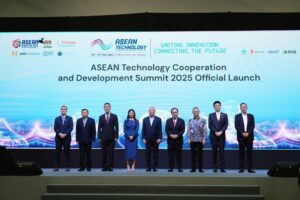
Geothermal power is emerging as a key player in the clean energy sector, garnering support from various quarters, including the Trump administration. Innovative developments in geothermal technology continue to gain momentum, particularly with significant financial backing stemming from policies enacted during the Biden administration. The recent budget legislation signed by former President Donald Trump in July preserved crucial tax credits for geothermal initiatives, encouraging investment in this renewable energy source.
Bipartisan enthusiasm has spurred several energy companies and startups to invest in advanced geothermal operations. Over the past few years, these investments have yielded promising results, fostering hope for increased clean energy production. Geothermal energy, sourced from the Earth’s natural heat, has been utilized for centuries, but modern technology has enabled deeper and more efficient extraction methods.
Innovative Techniques Drive Geothermal Growth
Historically, geothermal energy has contributed only 0.4 percent to the U.S. energy mix, hindered by technological and geographical limitations. Current plants operate primarily in regions like Northern California and Nevada, relying on naturally occurring reservoirs of hot water and steam to generate electricity. Companies are now exploring new approaches to access geothermal resources, adopting techniques adapted from oil fracking and other innovative methods.
Sage Geothermal is at the forefront of this shift, employing a cycle-based heat recovery approach that utilizes natural heat and pressure. According to Sage’s CEO, Cindy Taff, the company has developed a method that allows hot water to rise to the surface without the need for pumps. Taff explained, “By using the natural elasticity of the rock, we can bring hot water to the surface without pumps. Unlike traditional approaches, we maintain pressure in the system rather than venting it at the surface, which boosts net power output by 25 to 50 percent compared to other next-generation geothermal technologies.”
In August, Sage Geothermal announced a partnership with Ormat Technologies to deploy its cutting-edge technology at an Ormat facility in either Nevada or Utah. This collaboration is anticipated to accelerate the development of Sage’s first commercial power-generation facility by approximately two years. Taff remarked on the significance of the partnership, stating, “For us, the ability to scale faster with Ormat is huge.”
Collaborations and Future Prospects
The momentum continued in September when Sage signed an agreement with Fervo Energy, another geothermal startup committed to advancing geothermal extraction methods. Both companies have heavily invested in research and development, aiming to enhance geothermal energy generation. Fervo recently struck a deal with Google to supply clean power, while Sage finalized an agreement with Meta.
Fervo Energy has received approval from the Department of the Interior to deploy 2 GW of geothermal power in Beaver County, Utah, with operations expected to commence in 2026. The company utilizes Enhanced Geothermal Systems (EGS) technology, which enables horizontal drilling into geothermal reservoirs, allowing access to multiple wells from a single location. This approach shows promise for expanding unconventional geothermal energy production.
In September, Baker Hughes was contracted by Fervo Energy to supply equipment for five power plants as part of the Cape Station project in Utah. Once operational, these plants are projected to generate 300 MW of electricity, sufficient to power around 180,000 homes. Baker Hughes’ CEO, Lorenzo Simonelli, emphasized the importance of geothermal power in advancing sustainable energy, stating, “Geothermal power is one of several renewable energy sources expanding globally and proving to be a vital contributor to advancing sustainable energy development.”
The support for geothermal energy has not gone unnoticed by prominent figures in technology and politics. In September, Bill Gates visited Fervo Energy’s Cape Station project alongside Senator John Curtis. Gates praised the company’s horizontal drilling method, calling it a “truly innovative approach” and highlighted the potential for geothermal energy to play a crucial role in maintaining America’s energy independence. He stated, “Geothermal is one of the most promising ways to deliver clean energy that’s reliable and affordable.”
As the landscape for renewable energy in the United States evolves, the geothermal sector appears to maintain governmental backing. While other renewable sources, such as solar and wind, face scrutiny, investments in innovative geothermal extraction technologies signal a bright future for this clean energy source. The ongoing collaborations and advancements within the industry offer hope for the commercial rollout of new geothermal operations across the country.







